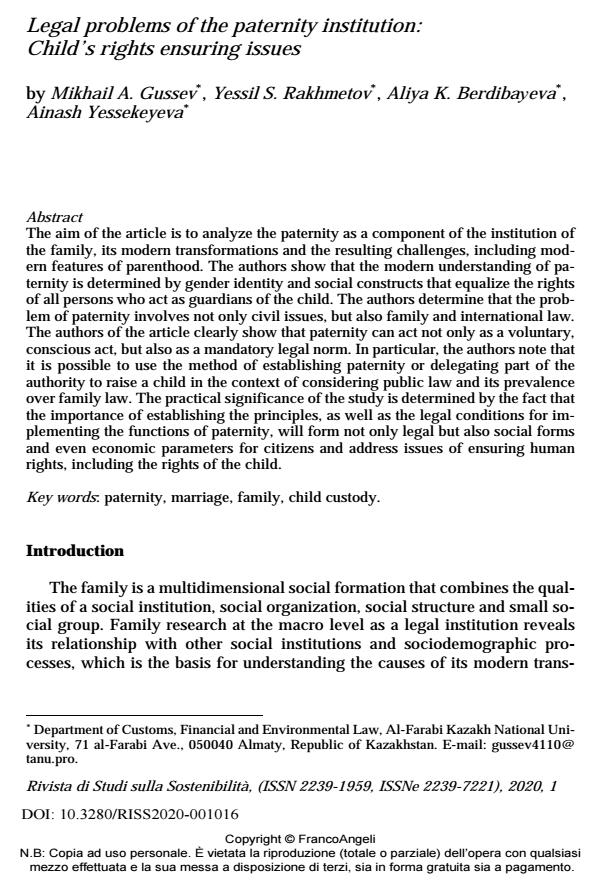Legal problems of the paternity institution: Child’s rights ensuring issues
Titolo Rivista RIVISTA DI STUDI SULLA SOSTENIBILITA'
Autori/Curatori Mikhail A. Gussev, Yessil S. Rakhmetov, Aliya K. Berdibayeva, Ainash Yessekeyeva
Anno di pubblicazione 2020 Fascicolo 2020/1
Lingua Inglese Numero pagine 20 P. 267-286 Dimensione file 131 KB
DOI 10.3280/RISS2020-001016
Il DOI è il codice a barre della proprietà intellettuale: per saperne di più
clicca qui
Qui sotto puoi vedere in anteprima la prima pagina di questo articolo.
Se questo articolo ti interessa, lo puoi acquistare (e scaricare in formato pdf) seguendo le facili indicazioni per acquistare il download credit. Acquista Download Credits per scaricare questo Articolo in formato PDF

FrancoAngeli è membro della Publishers International Linking Association, Inc (PILA)associazione indipendente e non profit per facilitare (attraverso i servizi tecnologici implementati da CrossRef.org) l’accesso degli studiosi ai contenuti digitali nelle pubblicazioni professionali e scientifiche
The aim of the article is to analyze the paternity as a component of the institution of the family, its modern transformations and the resulting challenges, including modern features of parenthood. The authors show that the modern understanding of paternity is determined by gender identity and social constructs that equalize the rights of all persons who act as guardians of the child. The authors determine that the problem of paternity involves not only civil issues, but also family and in-ternational law. The authors of the article clearly show that paternity can act not only as a voluntary, conscious act, but also as a mandatory legal norm. In particu-lar, the authors note that it is possible to use the method of establishing paternity or delegating part of the authority to raise a child in the context of considering public law and its prevalence over family law. The practical significance of the study is determined by the fact that the importance of establishing the principles, as well as the legal conditions for implementing the functions of paternity, will form not only legal but also social forms and even economic parameters for citi-zens and address issues of ensuring human rights, including the rights of the child.
Parole chiave:Paternity, marriage, family, child custody.
Mikhail A. Gussev, Yessil S. Rakhmetov, Aliya K. Berdibayeva, Ainash Yessekeyeva, Legal problems of the paternity institution: Child’s rights ensuring issues in "RIVISTA DI STUDI SULLA SOSTENIBILITA'" 1/2020, pp 267-286, DOI: 10.3280/RISS2020-001016